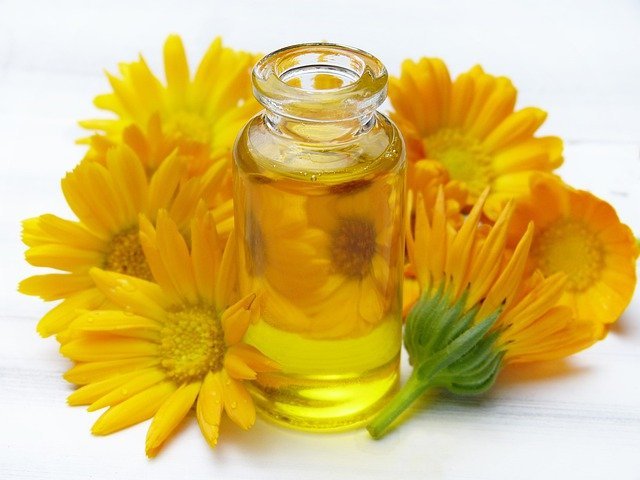
Calendula oil is an oleolite obtained from the maceration of the flowers of Calendula officinalis,a plant of the Asteraceae family. Rich in essential oils, fatty acids, flavonoids and carotenoids, it is used in phytocosmetics for dry or sensitive skin.
Calendula oil, in fact, has an emollient, soothing, calming, anti-inflammatory and healing action, and is therefore endowed with a powerful eudermic action, able to improve the state of the skin.
Protagonist of many myths and legends about the pains of love, calendula is the plant that soothes, heals and flares the reddened and sensitive skin; for this reason it is used as an elective remedy for the delicate skin of children. And not only
Calendula oil is an oleolith, obtained by maceration of calendula officinalis flowers in a vegetable oil, and endowed with a powerful eudermic action, because it can improve the state of the skin; useful in all those cases in which it turns out to be irritated and cracked. Calendula oil is also a great ally of mothers: in fact, it soothes and protects the sensitive and irritable skin of the newborn and child; moreover, if used in advance, it counteracts the formation of fissures in the breast of the nursing mother, and is also able to quickly heal those already present.
Its name comes from the Latin Calendae, a word with which the Romans indicated the first day of the month, as the plant blooms once a month throughout the summer. Another hypothesis is that it is called so from “calendar”, since it marks the rhythm of the day opening in the morning and closing at sunset. The peasant tradition has it that, if in the morning the flowers remain closed, it will probably rain. For this reason, in medieval texts she was referred to as Solis sponsa, or the “bride of the sun“.
How calendula oil is prepared
As for arnica oil and Hypericum oil, calendula flowers (100 gr) are used to prepare calendula oil, macerated in sweet almond oil (500 ml), in such a way as to transfer the fat-soluble principles from the flowers to the oil.
Put the dried flower heads in a dark glass jar, equipped with an airtight lid. Then the oil is added, covering the flowers until the container is completely filled and it was kept for about 1 month in a cool and dark place, taking care to turn the macerarate every 2 days, to avoid the formation of mold.
After about 30 days, filter the oil, through a light canvas, or gauze. Squeeze the residue, and if you want a pure oil, you can make a second filtering using cotton gauze, so that the fibers of the gauze capture the last residues and impurities. Then store the oleolite thus obtained, in a dark glass bottle, in a cool place and possibly indoors.
Properties and benefits of calendula oil
Calendula oleolite has an emollient, soothing, calming, anti-inflammatory and healing action on sensitive or irritated skin. These eudermic properties are conferred on the plant by the presence in its phytocomplex of essential oil, fatty acids, salicylic acid, saponins, carotenoids, including calendulin, pentacyclic triterpenes, flavonoids, polysaccharides and mucilages.
It is used effectively to nourish and moisturize dry, cracked, delicate and easily reddened skin; in the presence of dermatosis, solar erythema, diaper redness, slight burns, allergic reactions to chemical agents or dermatitis due to environmental factors, and finally neutralizes toxic and poisonous substances inoculated by insect bites.
Description of the plant
Annual plant with taproot, branched stem (50 cm) empty internally and covered with fluff. The leaves are thick, lanceolate with whole or slightly toothed margin. The flowers are flower heads with variable color from yellow to orange and appear in spring summer. The rubbed plant gives off a pleasant aroma, due to the presence of essential oil.






